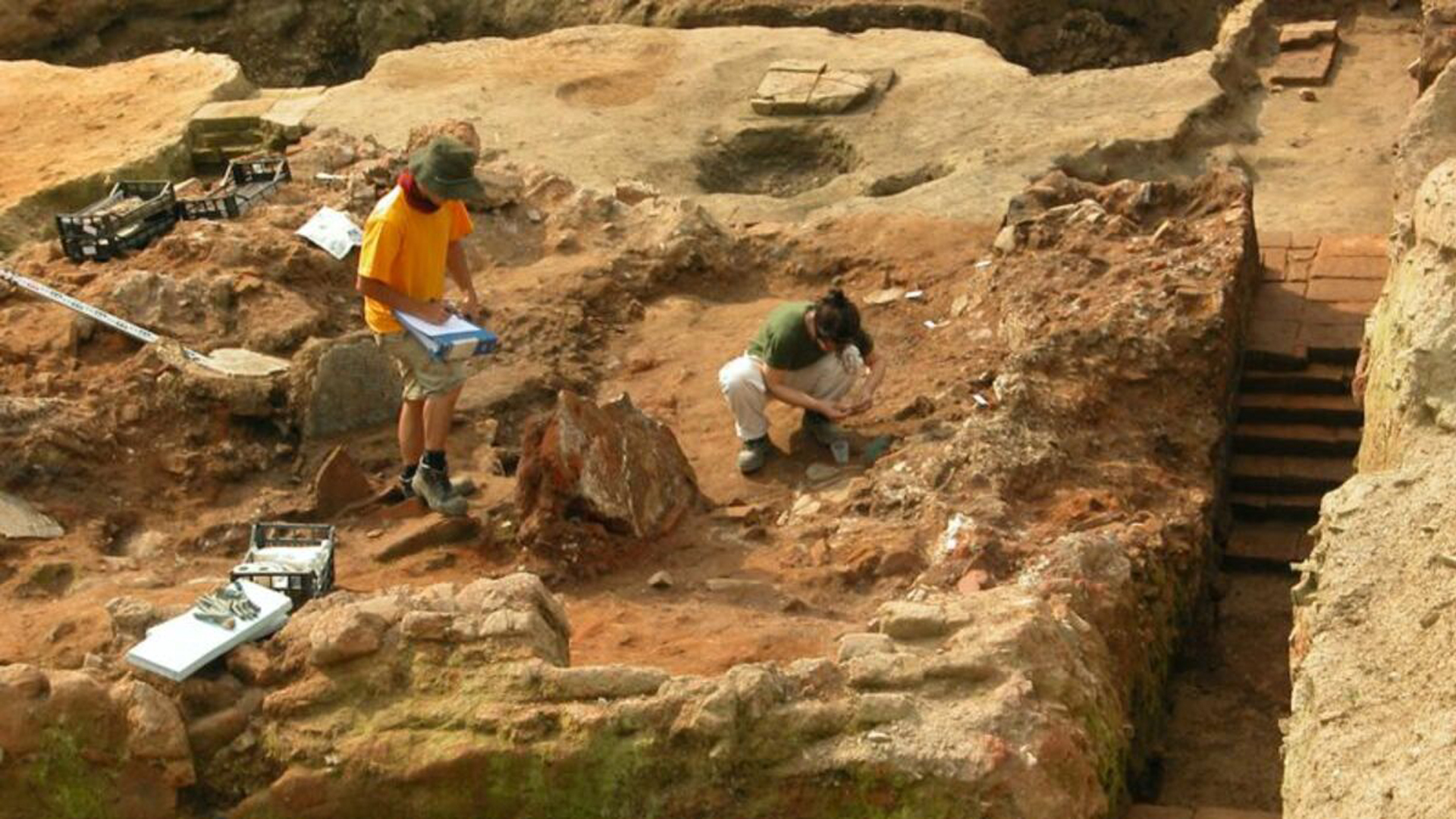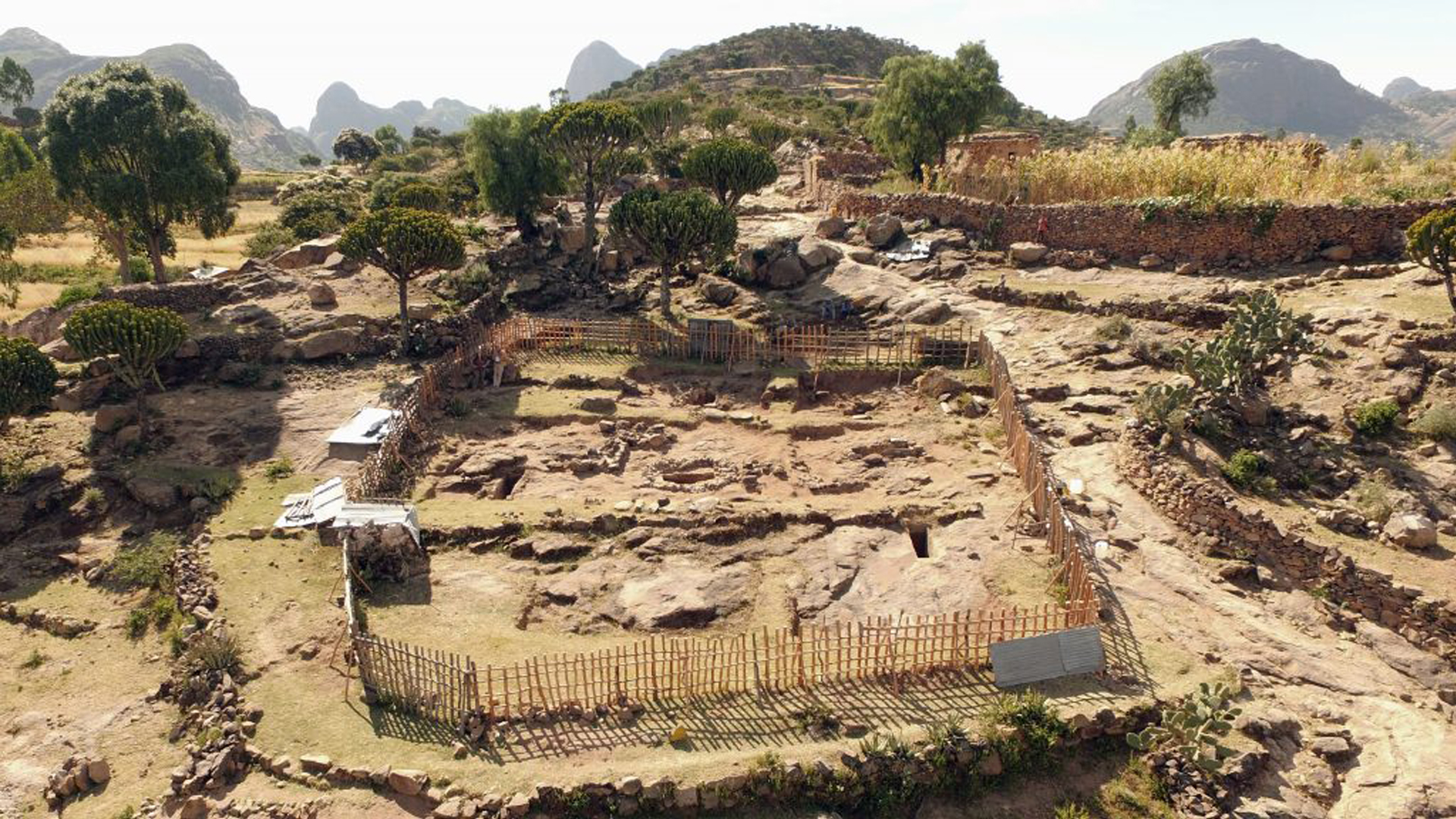The Da’ero Mikael rock tombs that cover an area of 250 m² are located about 300 m to the southeast of the Great Temple near the Valley of Shillanat excavated by Francis Anfray in the 1960s and 1970s. Seventeen series of rock-cut graves dating to the first millennium BC that may have belonged to the rulers who probably lived at the palace of Grat Bea’l Gebri were excavated (Fattovich, 1990). These vertical shafts lead to one or more tomb chambers. The grave contents of these tombs included abundant pottery, copper-alloy sickles, zoomorphic seals, other tools, and an alabaster vessel that witness the artistic and technological sophistication of the time.
The cemetery at Yeha consists of six rock-cut tombs. Each tomb was accessed via a staircase along 8.2 ft (2.5 m) deep vertical shafts with one grave chamber on each side. The entrances to the tombs were originally blocked by rectangular stone panels, and other stone panels sealed the shafts at the surface, and then all was covered by a mound of stone rubble.
A stone enclosure fenced in the tombs, although it is unknown whether they were roofed or not. The chambers were up to 13 ft (4 m) in length and 4 ft (1.2 m) in height and were originally used for multiple burials, but all were looted in antiquity. Some displaced skeletal fragments and broken grave goods (clay vessels and beads) were found; based on grave goods and similar tombs at other Saba sites, the tombs probably date to the 7th–6th c BCE.
The other rock-cut tombs of Yeha are found at the foothill of Abiy Adi across the valley of Shillanat to the southwest of the Grand Temple. Nine rock-cut tombs were partly observed located next to each other in various orientations in an area of 500 m². They were cut into the rock up to two to three meters deep. A rectangular shaft of 2 x 0, 6 m leads to one or two sub-rectangular chambers with different sizes of up to 0.9 m in height and 2–3.8 m in length where collective burials took place, most probably successively over a long period during the first millennium BC.
Similar rock-cut tombs dating to the first millennium BC are not known in the eastern sides of the Red Sea. They are only common in the stratified communities of the Northern Horn dating from the first millennium BC to the early first Millennium AD as it can be understood from some pre-Aksumite and Aksumite sites.
The above archaeological evidence shows that the site of Yeha has outstanding universal values that merit inclusion to the World Heritage List. It testifies the earliest evidence for the emergence of complex culture in the Northern Horn in particular and in sub-Saharan Africa in general. This testimony is traceable in the construction techniques and designs of the Palace of Grat Be’al Geubri and the Grand Temple and religion and cultural practices, artistic handicrafts, and inscriptions. The site of Yeha was also a political, religious, and cultural Centre of highly centralized complex societies that flourished at Yeha in the early first millennium BC in what is now the Northern Horn (Tigray and Eritrean). It was also the first capital city of the Tigrai kingdoms before its transfer to Aksum.




